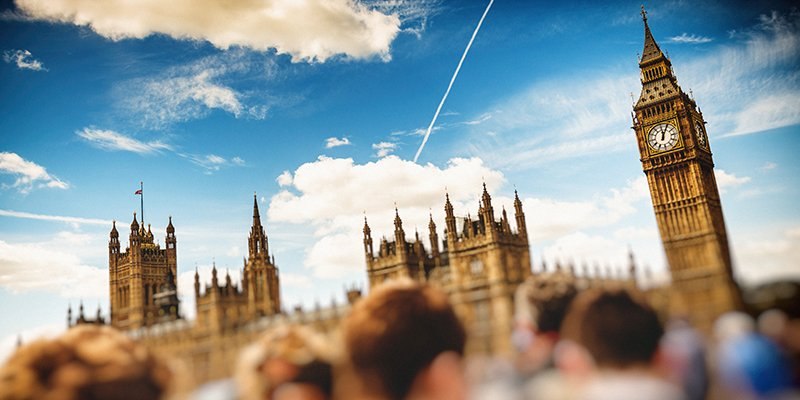Latest YouGov MRP model suggests that if an election were held tomorrow, the Conservatives would hold on to just three of 88 battleground seats
The Conservative party faces the prospect of largescale losses in Con-Lab battlegrounds up and down England and Wales, according to YouGov’s latest MRP model.
From the 88 constituencies which the Conservatives either (a) won from Labour in 2019, or (b) currently hold with a majority of less than 15pts over Labour, our modelling predicts that just three would remain in Conservative hands: Ashfield, Bassetlaw, and Dudley North.
Other high profile ‘Red Wall’ Conservative gains from 2019 would fall straight back into Labour hands if an election were held tomorrow, including Burnley, Blyth Valley, Leigh, and Stoke-on-Trent North.
Other constituencies sit on an absolute knife edge, with Labour’s predicted winning margin in each of Bishop Auckland, Scunthorpe, and Great Grimsby all less than two points.
Elsewhere, Boris Johnson’s seat of Uxbridge and South Ruislip would likely fall into Labour hands, with current results suggesting a 5pt Labour lead in the constituency. Wakefield – where Labour have a strong chance of winning the by-election next month – would also return to the red column.

Looking at ‘Blue Wall’ areas where Labour are principle the challengers to the Conservatives, and there is yet more pain for the governing party. Every seat in London and the South under the battleground definition falls to Keir Starmer’s party: from Iain Duncan-Smith’s constituency of Chingford and Woodford Green, to Steve Baker’s seat in Wycombe, to the marginal bellwether of Southampton Itchen, Labour sweep the board.
Every Conservative seat in Wales under our battleground definition would be lost – including one to Plaid Cymru, who are currently picking up Ynys Mon. The other eight include the former Labour heartlands of Wrexham, Bridgend, and Delyn.
The constituencies where the Conservatives are hanging on do tell an interesting tale about how the ‘Red Wall’ is breaking down as we move into a phase in British politics where Brexit divides become less prominent.
One of the major stories of the local election results was contrasting Labour and Conservative fortunes across different regions of the country (a feature correctly predicted by YouGov’s council 2022 forecast model). The same appears to be the case here, with each of the three Conservative holds coming in the Midlands.
The Conservative vote holds up better in general in battleground constituencies in the North East and East Midlands (-11pts) than it does in the South (-14pts) or East of England (-13pts).
If we restrict the analysis to seats that the Conservatives took from Labour in 2019 which Labour previously held in both 2017 and 2015, the figures become even clearer; the Conservative vote drops by 8pts in the East Midlands and 10pts in the North East, compared to 14pts in the West Midlands and 12pts in Wales.
So, while Labour look set to take back a raft of ‘Red Wall’ areas from the Conservatives, based on current polling, the Tory vote in some places – particularly those in more rural areas up and down the East of the country – means, some newly-minted Conservative incumbents will fare much better than others.
There is however a lot of uncertainty around these figures. The next election is of course not scheduled for another two years, and the boundaries on which it will be fought are currently planned to change. What’s more, no fewer than 25 battleground constituencies are currently forecasted to be won by a margin of less than five percentage points – well inside what we would consider a ‘margin of error’ for an exercise of this nature.
YouGov interviewed over 15,045 voters across England between 19-27 May, and 2,086 voters in Wales between 28 April and 27 May. Constituency-level forecasts were estimated using the same method which correctly predicted the 2017 and 2019 general elections. MRP constituency forecast models first estimate the relationship between a wide variety of characteristics about prospective voters and their vote intention (this is the ‘multilevel model’ part). It then uses data at the constituency level to predict the outcomes of seats based on the concentration of various different types of voters who live there, according to what the multilevel model says about their probability of voting for various parties (‘post-stratification’). In this instance, 750 draws from the posterior distribution of the multilevel model were used to predict the constituency probabilities, which ran for 9,000 iterations across four chains. Turnout likelihood for each voter group was estimated using a multilevel model fit on British Election Study data with post-hoc adjustments made according to the latest self-reported turnout likelihoods in YouGov data. The precise multilevel model equation has been benchmarked to correctly estimate the 2017 and 2019 general elections to within a handful of seats of each party’s actual performance in those elections






